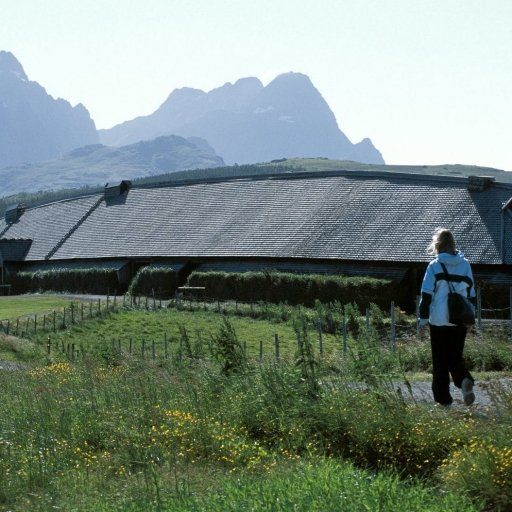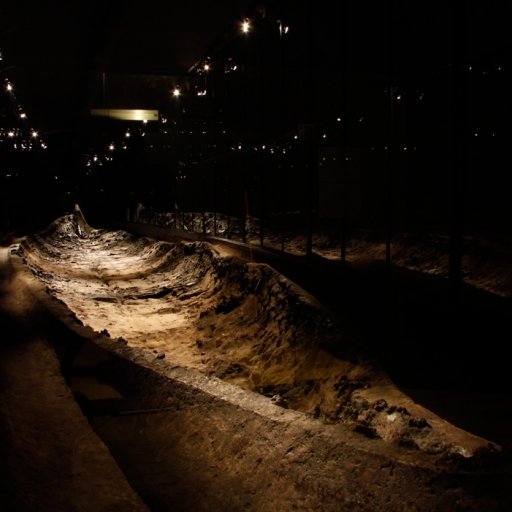Scandinavian Vikings
The Vikings' reputation as plunderers and colonisers is established through tv-series, but this does not tell the whole story.
The Vikings were explorers and merchants. The Nordic countries came into contact with the rest of Europe during the Viking Age, from the late 8th century to mid 11th century.
By the end of the 11th century, the three kingdoms were established, the kingdoms of Denmark, Norway and Sweden.
The Viking Age started in the year 793
The Nordic warriors, known as the "Vikings" dominated Europe for three centuries. The word Viking means raiding, which is how they were named.
The Viking Age is usually said to have begun with the raid in June 793 on the monastery of Lindisfarne in England to the battle of Hastings in 1066. After this, they also reached France, Lisbon, Spain, Italy and several towns on Africa`s Mediterranean coast.
Crossing the Atlantic, the Vikings settled in Iceland and Greenland and reached the coast of North America.
Their superior ships explored unknown seas, and they settled in new lands. In this way, the Vikings had a huge impact on the history of many countries and were both an explorer, warriors and a trader.
The Vikings undertook hazardous sea journeys in longships to many parts of Europe. These expeditions coincided with rapid and significant improvements in boat building.
Who were the Vikings
The Viking story is a fascinating dramatic story of ruthless pirates closely linked to their role as masters of the sea. However, this does not complete the story of the Vikings. They were also poets, lawmakers, artists and farmers who could take full advantage of nature. They fashioned intricate tools and were skilled craftsmen. You can find incredible stories and landmarks of the Vikings in Denmark, Sweden and Norway.
They also settled in the Faroe Islands, Ireland, Iceland, Scotland, Greenland and Canada. Some carried out raids in the early years of the Viking age. Later they undertook systematic campaigns of conquest with well-trained armies.
According to Sagas, Iceland was discovered by a Viking from the Faroe Islands called Eric the Red. According to the saga, Erik sailed west and pioneered Greenland when exiled from Iceland.
The Viking language
The language in Denmark, Norway and Sweden is almost identical, and the people in the three countries can understand each other when speaking their language. They have their common origin in the language spoken in the Viking age.
Iceland was isolated from the Nordic countries for centuries, and they talk about a language almost identical to the original. The people in the other Nordic countries cannot understand them.
How was daily life in the Viking Age
Even if the Vikings were known abroad as ruthless pirates, the story tells via remarkable findings how the population rapidly was growing, where they conquered lands. They lived in a well-ordered society which was based on laws and democracy.
There was a clear social hierarchy in the Viking Age. The Jarl was the owner of land with great economic power. The upper levels of the Viking society comprised various forms of aristocracy and kings. Lowest in the social order were the thralls or slaves, who had no rights.
The "Ting" was responsible for maintaining law and order and is considered one of the first democratic organs and the beginning of the modern jury system.
The women had a powerful Viking society position and were responsible for the farm when their men were abroad.
Myths and facts about the Vikings
Vikings were also skilled craftsmen and developed effective weapons. Remarkable findings tell about swords, axes, bows, arrows and spears. Defensive weapons included helmets and shields.
Contrary to popular belief, there is little evidence that Viking-age helmets ever had horns. In games or movies, the Vikings often wear a horned helmet, but the real Vikings wore good and practical helmets without horns. In the Viking age, helmets were typically made from several pieces of iron riveted together.
About the Viking Ship
Several archaeological finds of Viking ships of all sizes provide knowledge of the craftsmanship that went into building them.
The ships' construction was very effective in connection with war and raids but also very robust and manoeuvrable.
See more:
The Viking Ship in Roskilde, Denmark
Where to spot experiences from the Vikings
In the Nordic countries, you will find landmarks, museums, events, castles, ruins etc..where you can discover and learn about Vikings' captivating life.
The spring and summer are a fantastic time to explore the Vikings, and there are several attractions and sites in the Nordic countries. Specifically in Denmark and Norway are several burial sites, fortresses and indoor and outdoor museums.
One of Denmark´s big attractions is “Kongernes Jelling”, an experience centre home to the Viking Kings in Denmark. This attraction is also on the World Heritage List. Here you turn back time and explore how the Vikings lived 1000 years ago.
"Bluetooth" was from Jelling
One of the Vikings Kings who lived in Jelling was called "Harald Bluetooth". King Harald had united Denmark and Christianized the Dane.
In1996, a consortium of companies—Intel, Ericsson, Nokia, and later IBM—decided to create a single wireless standard. They gave the project the cover name "Bluetooth", after the old Viking King. When they should find a new name for the product, they decided to keep the name because it was so good.
The now-iconic Bluetooth logo is a combination—officially known as a bind rune—of King Bluetooth's initials in runes: ᚼ and ᛒ.
See more:
























